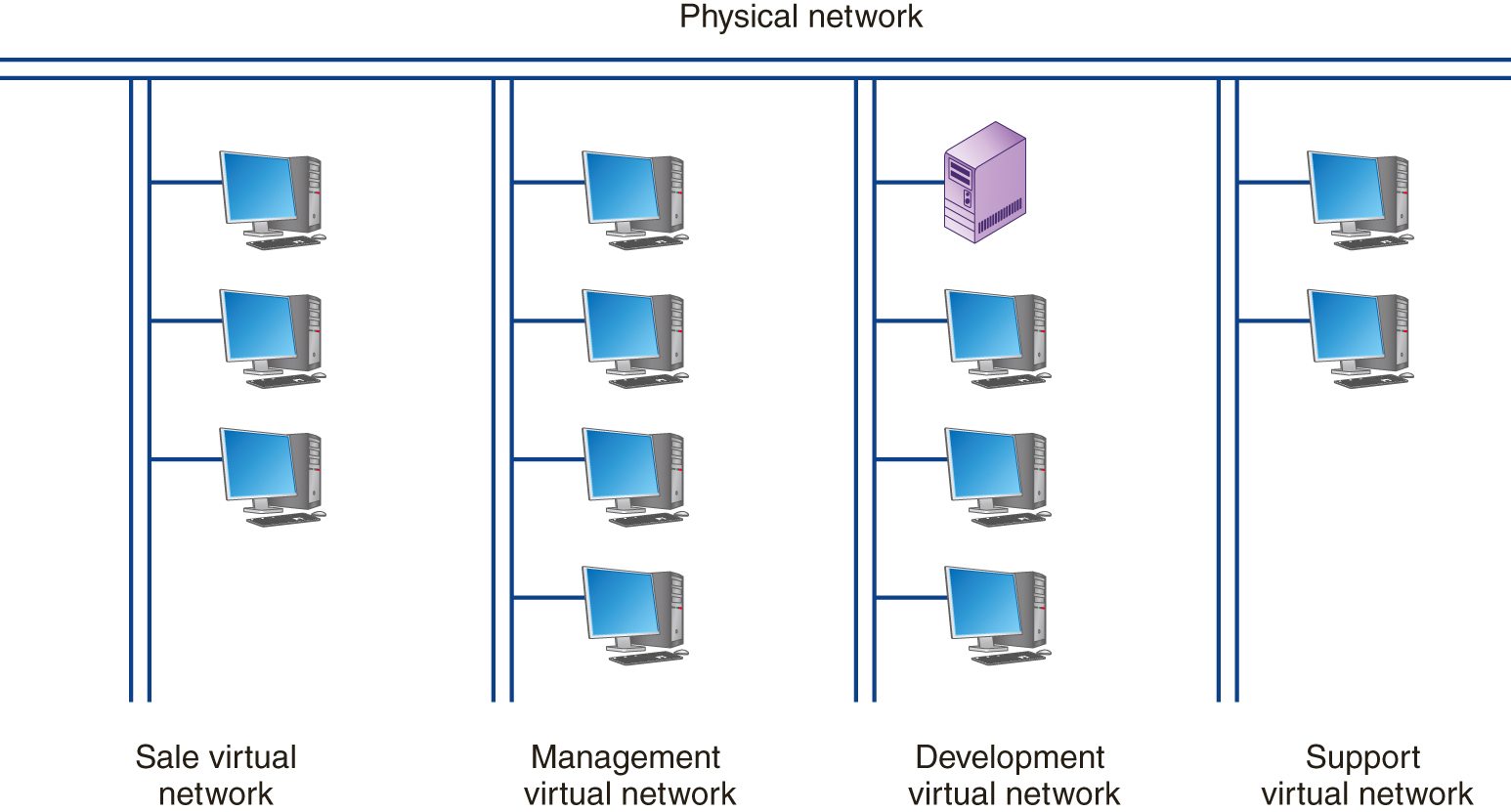Virtual Networks
Networks allow users to share resources such as printers, storage devices, and applications. Most businesses utilize a local area network (LAN) to connect users. Typically, LANs are just that—the cables or wireless devices that connect users are local to a specific office, building, or campus, as shown in FIGURE 8-10.

FIGURE 8-10 LANs are designed to allow users to share resources within a localized environment such as a home, business, office building, or small campus.
Often, users who travel and users who work from remote locations must connect to the company’s LAN in order to accomplish specific tasks. In such cases, the users can use special software to create a VPN connection to the LAN. VPN software, as shown in FIGURE 8-11, use a secure Internet connection to give users the illusion that they are physically connected to the remote network from their current locations.

FIGURE 8-11 A virtual private network creates the illusion of a secure physical connection to a LAN using software and/or hardware to connect the user across the Internet.
When multiple workers work remotely, at times the group may need to establish its own network in order collaborate securely and effectively. Rather than establish a physical network for the group, companies will configure a virtual local area network (VLAN) which uses special routers to segment part of the physical network in such a way that the group appears to have its own private network.
In a similar way, for internal security and performance purposes, companies may use virtual networks to create separate networking environments for sales, management, development, and support, as shown in FIGURE 8-13.

FIGURE 8-13 Virtual networks create the illusion of two or more standalone networks.
Again, across the web, many companies such as VMware and Cisco provide support for the creation, management, and security of VLANs.
